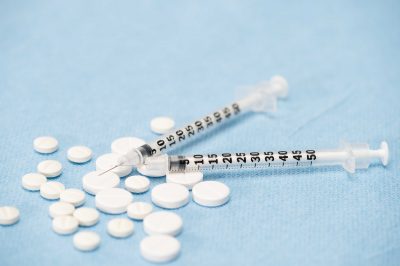The amount and levels of testosterone a person has in their body can vary and change all through their lives.
The levels depend on several factors such as the person’s age, health, and sex. Men usually have a higher concentration of testosterone compared to the testosterone levels within women.
Testosterone is a kind of androgen hormone and its primary functions are known to be as a male sex hormone. But women also need a certain amount of testosterone within their body, but it is mostly converted into a hormone called estradiol which is a sex hormone for women’s bodies.
Testes produce testosterone in the male reproductive system while for women it is in the ovaries that produce testosterone. However, the adrenal glands also produce small quantities of testosterone for both genders.
Testosterone is important for male because of;
- It is a key hormone in the development of the male body during puberty
- Production of sperms
 The strengthening of bones and muscles
The strengthening of bones and muscles- Sex drive
Testosterone is important for women because it;
- Maintains the levels of other hormones
- affects sex drive and fertility
- produces new blood cells
There is a connection between low levels of testosterone and a person’s sex drive and fertility for both genders.
The body controls the levels of testosterone naturally and having low levels of testosterone is more common in men than having high or elevated testosterone amounts.
Typical testosterone levels
Testosterone is measured in nanograms per deciliter. People have different levels of testosterone. Below are the tables that show what the ranges are for healthy amounts of testosterone levels for each major age bracket.
Children and infants
| Age | Male (in ng/dl) | Female (in ng/dl) |
| 0 to 5 months | 75-400 | 20-80 |
| 6 months to 9 years | Less than 7-20 | Less than 7-20 |
| 10 to 11 years | Less than 7-130 | Less than 7-44 |
Adolescents
| Age | Male (in ng/dl) | Female (in ng/dl) |
| 12 to 13 years | Less than 7-800 | Less than 7-75 |
| 14 years | Less than 7-1,200 | Less than 7-75 |
| 15 to 16 years | 100-1,200 | Less than 7-75 |
Adults
| Age | Male (in ng/dl) | Female (in ng/dl) |
| 17 to 18 years | 300-1,200 | 20-75 |
| 19 years and older | 240-950 | 8-60 |
Tanner staging
The Tanner scale tracks the visual development of the physical bodies of children during adolescence or puberty. They are measured in five stages instead of it being specific to a person’s age.
For instance, in stage II of the Tanner scale, the growth of a male’s testicles or the development of the breasts for a female is measured instead of it referring to their actual age.
Hormone levels can change quickly and dramatically during the development and puberty stage, but their ages can vary. Because of this, the Tanner scale is a more accurate method to analyze the changes during puberty than simply referring to their age.
Tanner scale stages
| Tanner stage | Male (in ng/dl) | Female (in ng/dl) |
| I | Less than 7-20 | Less than 7-20 |
| II | 8-66 | Less than 7-47 |
| III | 26-800 | 17-75 |
| IV | 85-1,200 | 20-75 |
| V | 300-950 | 12-60 |
Low testosterone
When there are low levels of testosterone in the womb it can directly affect the development and growth of the male fetus. It can also affect boys during puberty, and it can even slow or stop a person from growing.
Hormone levels are always changing, and this is true for both genders. Although females usually experience a more dramatic change in their hormones during menopause.
While men experience a gradual change in their hormonal levels. But either way, there is a decrease in testosterone levels due to age both for men and women.
Low levels of testosterone in men can lead to:
- increase in fragile skin
- the decrease in muscle mass
- the decrease in sexual drive
- hair loss
- concentration and memory problems
low levels of testosterone in women lead to:
- irregular menstrual cycle
- low sex drive
- weak bones
- vaginal dryness
- fertility issues
but there is more research that needs to be conducted on how low levels of testosterone can affect people as they age.
High levels of testosterone
This is unusual in adult males but children with high levels of testosterone will experience what we call a “growth spurt.” This happens during puberty.
High levels of testosterone can also cause infertility in some cases for both sexes.
Polycystic Ovary Syndrome (PCOS)
This happens when there is an overproduction of testosterone in the ovaries of a woman.
The symptoms for PCOS are:
- oily skin
- acne
- irregular menstrual cycle
- increase in hair growth
There is no concrete evidence as to the source of PCOS however researchers think that it is a combination of environmental factors and genetics.
Steroid Use
 Steroids have a similar make-up to that of testosterone and some people use it to increase their muscle mass or to gain weight, but it can affect both men and women negatively.
Steroids have a similar make-up to that of testosterone and some people use it to increase their muscle mass or to gain weight, but it can affect both men and women negatively.
Steroid use can raise the levels of testosterone in both sexes’ blood which may cause the body to stop or reduce the production of testosterone.
The excess of testosterone in the male body can lead to a drop-in sperm count which can also lead to infertility and the decrease of their sexual drive.
While for women the use of steroids can be linked to a change in their voice, irregular periods, male-pattern baldness, and even female infertility.
Diagnosis and testing
If anyone has any suspicions on the levels of their testosterone, they should see a physician to get tested. For a doctor to diagnose you they will do a physical examination, as well as ask you questions related to your medical history and some other examinations that they may see fit.
For men doctors might;
- discuss their development during puberty
- discuss the usage of opiates or steroids
- measure the body mass index or BMI
- check for male pattern baldness in their hair
- check the size of the prostate gland as well as the testicles
for women doctors might ask about;
- menstrual cycles
- skin conditions or acne
- facial or body hair
- muscle mass increase
for adolescents then doctors may about the signs or symptoms of puberty.
Total testosterone test
This is a blood test. The ideal time to have this test done is in the mornings because that is when the levels of your testosterone in the blood are normally at its highest.
Although the levels of testosterone can change within the day, so some people choose to retake the tests to confirm the results.
Treatment and conclusion
It is now possible to treat men for their low levels of testosterone with an injection, a patch, or a gel. However, it is important to note that using these treatments for a long time can cause potentially severe side-effects like heart failures or other heart conditions.
For women who have PCOS, they can treat their symptoms with hormonal contraception, weight loss, and fertility treatment are needed.








COMMENTS